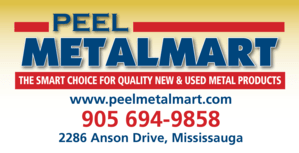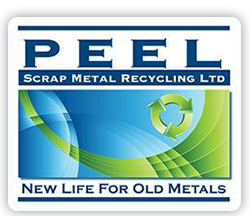Recycling Cathode Ray Tubes…A Real Source Of Industrial Innovation
For the curious minds among us, the recycling industry is a really fascinating place. It is always looking for and developing new and effective technologies to collect and process end-of-life material. For the rest of us, we just take for granted that technology has found a way to recycle everything we throw out.
The reason most people don’t think of the recycling industry as innovative is that they normally associate recycling with a curbside waste collection where the only innovations they see have to do with the trucks and bins used for that collection.
As a recycler, however, our experience is quite different. We all recognize the speed at which technology is advancing but just imagine the problems this creates for those of us having to constantly develop processes and technologies to collect and decommission new materials and new products or assemblies – and to accomplish this within increasingly strict regulatory frameworks which necessarily consider the hazards involved but with less regard to the costs and the very small margins, if any, inherent to the process.
To illustrate this, consider the problem of the glass that has been used to produce Cathode Ray Tubes (CRTs) for televisions, computer monitors, and the like. Old technology now but those tubes are about 42% of the weight of the televisions and monitors used in this glass and each contains from 4 to 8 lbs of lead. The lead is constituted in the glass to protect consumers from the X-rays that are generated by the machines.
Because lead is hazardous, the glass requires special handling and processing.
Initially, it could be used to produce more glass for new devices with CRTs but as the technology advanced and we developed flat screen liquid crystal and Light emitting diode technology to replace CRT the solutions had to change as there was less and less demand for the older technology and more and more of it being discarded.
 Sending the glass to lead smelters was an option but it was costly and presented environmental challenges. As a result, inspectors in the U.S. began to find stockpiles of CRT’s and CRT glass taken in by recyclers. At one point it was estimated that there was 860 million pounds of this toxic leaded glass in warehouses and abandoned sites in the U.S. Even more was estimated to be just sitting in households. All of this in excess of any existing capacity to deal with the problem.
Sending the glass to lead smelters was an option but it was costly and presented environmental challenges. As a result, inspectors in the U.S. began to find stockpiles of CRT’s and CRT glass taken in by recyclers. At one point it was estimated that there was 860 million pounds of this toxic leaded glass in warehouses and abandoned sites in the U.S. Even more was estimated to be just sitting in households. All of this in excess of any existing capacity to deal with the problem.
Big Challenges Call For Big Thinking
With fewer options and with the economics being turned upside down (i.e. earnings from recycling this material becoming costs) it’s little wonder that things were moving in the wrong direction. Moreover, historically, whenever the costs of recycling anything become more than the material is worth it is the taxpayer who shoulders the burden by being forced to subsidize those costs. Recycling cathode ray tubes is no exception.
As is most often the case, solutions did not rest with more government intervention and regulation. Presented with a challenge and the flexibility to address it, the private sector invariably rises to the occasion.
One of the more significant events here was a technical outsourcing challenge in the U.S. sponsored by the Consumer Technology Association, ISRI (Institute of Scrap Recycling Industries), and others. There were more than one hundred entries and a number of innovative concepts were introduced to deal with the problem.
It turned out, for example, that the leaded glass could be used as protection from radioactive rays, as feedstock for recycled glass tiles, and as an incentive to develop extremely energy-efficient glass furnaces.
Finally, those LCD flat-screen TVs and monitors that replaced the older CRT technology, used mercury in their fluorescent lamps to backlight the display. Another challenge that fortunately led to the development of LCD TVs using LED (light emitting diodes) as backlights. These use less electricity and have no toxic substances like mercury or lead.
The Learning
Recycling will always require innovation. But what we should learn from all of this is that we need to design the things we manufacture in a way that will allow for the efficient recovery of material and ensure that the material we do recover is valuable enough to be worth the effort.
Sometimes we need to work backward if we are going to get a step ahead!
Say Hello To Peel Metal Mart
Just a reminder that our Metal Mart store is now open with great prices on a selection of quality new and re-usable steel and pipe, electrical and plumbing supplies, and more.
 Located across the street from Peel Scrap Metal at 2286 Anson Drive in Mississauga, it is open from 8:00 AM to 4:00 PM Monday to Friday. Visit us at our website at www.peelmetalmart.com or call us at 905-694-9858 for additional information.
Located across the street from Peel Scrap Metal at 2286 Anson Drive in Mississauga, it is open from 8:00 AM to 4:00 PM Monday to Friday. Visit us at our website at www.peelmetalmart.com or call us at 905-694-9858 for additional information.
